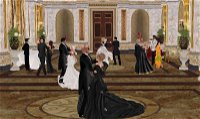
Private Dancer Trivia Quiz
These are just some of the many distinctive dance forms found around the world. Can you correctly match the pictures with the dances?
by zorba_scank.
Estimated time: 3 mins.
- Home
- »
- Quizzes
- »
- Humanities Trivia
- »
- Performing Arts
- »
- Dance









